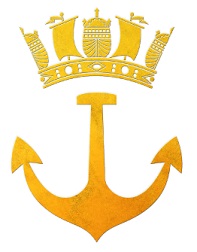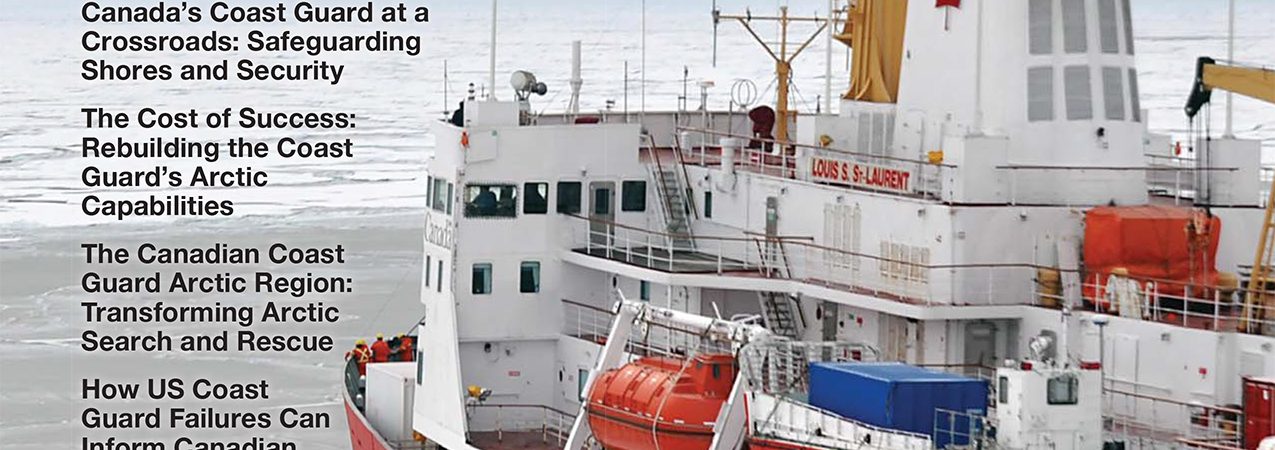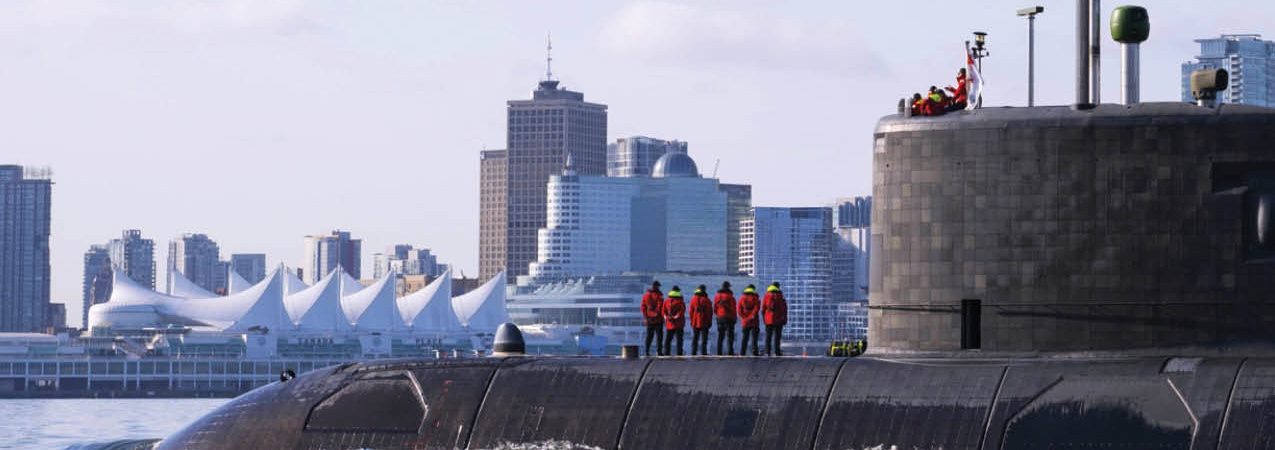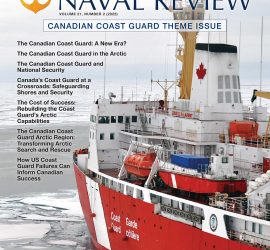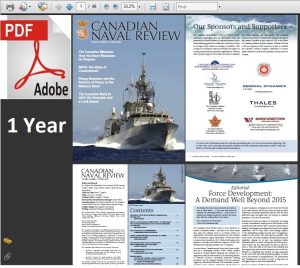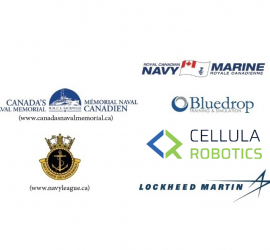Dollars and Sense: Giving the Canadian Coast Guard a Larger National Security Role
By Dave Perry, 22 November 2025

[This is an excerpt of an article in Vol. 21, No. 2 of Canadian Naval Review. For the full article, click on the link below.]
During the 2025 federal election the Liberal Party of Canada committed to giving the Canadian Coast Guard (CCG) a more meaningful role in Canada’s national security. Specifically, the party platform promised to “expand the reach and abilities of the Canadian Coast Guard and integrate them into our NATO defence capabilities.”1 At the time of writing, the complete implications of the move remain to be fully fleshed out. Prime Minister Mark Carney’s government has, however, already moved the organization to sit under a new department, as it is now operating as a Special Operating Agency under the Department of National Defence (DND). Further, senior CCG leadership began participating in DND governance meetings over the summer of 2025.
These swift initial moves, without waiting on a fully specified revised mandate, represent timely, much-needed and long-overdue reorientation of the organization’s role and mandate. As one former senior CCG official noted, given the unique role for the organization, it has always been a bit of an orphan in the federal government, as its mix of transportation safety, scientific and security activity left it an uneasy fit under the Department of Fishery and Oceans. While the CCG may still be somewhat of an orphan, clearer direction on its national security role and having it report to the Department of National Defence may ensure it now has a better foster home.
Since the publication of the 2004 National Security Policy, the Canadian Coast Guard has operated with a vaguely defined national security mandate and little guidance as to how it could meaningfully contribute to the actual guarding of Canada’s coasts. The CCG was identified as one of the organizations (alongside the Canadian Armed Forces and RCMP) tasked with providing enhanced marine security through a six-point plan that included increased on-water presence, better coordinated action with Canadian and American partners, enhanced secure communications, and establishing a Marine Security Operation Centre.2 Aside from this, the organization lacked formal direction on how it might be a more meaningful security partner, a situation exacerbated by a lack of funds to recapitalize its aging fleet until the creation of the National Shipbuilding Procurement Strategy in 2010 under the Stephen Harper government, and the expansion of CCG fleet plans under Prime Minster Justin Trudeau.
Nonetheless, albeit aged, the CCG still possesses the largest number of Canadian assets on the water and, through its fleet of icebreakers, the only government vessels capable of transiting some Canadian waters during ice season. This practical on-water presence therefore presented a meaningful opportunity to make a significant improvement to Canada’s marine security posture by changing the organization’s mandate and providing it with the supporting equipment to deliver on it. In recent years there were calls for exactly this type of change to both role and equipment, which could relatively quickly make a significant enhancement to Canadian operational maritime capability.3
Post continues on the Broadsides Forum
Trending now:
- Dollars and Sense: Giving the Canadian Coast Guard a Larger National Security Role
- International Drone SITREP
- The Cost of Success: Rebuilding the Coast Guard’s Arctic Capabilities
- Report on Panel Discussion “Alliances and Partnerships in Shifting Geopolitical Landscapes”
- The Canadian Coast Guard and National Security
- The Promised Government Support for DND – Where Do We Begin?
- Under ICE Pact, the United States announces it will build their Arctic Security Cutters (ASC) first - October 9, 2025
- The Critical Influence on Future Canadian Military Planning
- Will the New DIA Optimize Defence Procurement?
- Submarines for Canada
- Well Played, Admiral!
- Potential Military Gaps within NATO
- Can DND think outside the US defence box?
- CNR sponsors: visit page
Latest Issue: Canadian Naval Review Vol. 21 No. 2 - Canadian Coast Guard Theme Issue

We have a special treat in store for CNR fans. Given the exciting changes that have occurred recently, including a change in its institutional home, we’ve produced a theme issue focused on the Canadian Coast Guard. This theme issue is sponsored by the Canadian Maritime Security Network.
This issue of CNR contains a variety of articles, by high-level and well-known authors, examining different elements of the Canadian Coast Guard (CCG). We start with quick overviews of the traditional roles the CCG has performed, particularly in the Arctic, and the new era for the CCG – in terms of new ships, new threats, new opportunities and new environment.
Our first article, “The Canadian Coast Guard and National Security,” looks at how the CCG can contribute to the national security environment after its move to DND. The second article, “Canada’s Coast Guard at a Crossroads: Safeguarding Shores and Security,” examines how the CCG move to DND can leverage “the CCG’s assets and capabilities to close gaps in the country’s common operating picture and deliver a more holistic national defence.”
The third article, “The Cost of Success: Rebuilding the Coast Guard’s Arctic Capabilities,” outlines that, despite the welcome addition of new ships for the CCG, the Canadian government is perpetuating the boom-and-bust cycle of shipbuilding. As well, the government is ensuring that the CCG will be ironing out wrinkles for years because of (a) the problems inherent in the first-of-class builds, (b) the different maintenance, crewing and training needs for the different ships, and (c) the fact that, once again, the fleet will have to be replaced wholesale in 30(ish) years. The fourth article, “The Canadian Coast Guard Arctic Region: Transforming Arctic Search and Rescue,” takes a close look at how the CCG has worked to improve its relationships in the North, and in this way to improve its response, and the response of local communities, to search-and-rescue operations. The final article, “How US Coast Guard Failures can Inform Canadian Success,” examines the recent USCG experience recapitalizing its fleet. In particular the article focuses on the need for strategic planning and getting the support of politicians, and examines hard lessons the USCG has learned about recruitment – with the hope that the CCG can learn from these lessons.
We don’t have our usual Making Waves commentaries, or “A View from the West” or “Warship Developments” but we do have “Dollars and Sense.” In this issue, “Dollars and Sense” looks at how the move of the CCG to DND affects defence spending, and can contribute to enhanced maritime domain awareness.
In addition to all this great information, we have our usual amazing photos – this time with a focus on CCG red and white ships!
Assuming that the Canada Post strike ends in the near future, the fall issue will be in your mailbox soon. E-subscribers will receive copies soon too. See the Table of Contents here.
CNR resources

- Previous Issues
- CNR Archives (2005-2025)
- Subject Index for CNR Articles
- Broadsides Forum - Join the Discussion
- Submissions to Canadian Naval Review
- Subscriptions - unlock access to all CNR materials
- Sponsor page
- Book Reviews
- Free CNR articles and PDF downloads
- Follow us on Bluesky and LinkedIn
- Donate to CNR
- Special offer
Read more: CNR Archives (60+ magazines in PDF) and Subject Index (600+ articles)
Looking for Books about Maritime Matters?
Over the last 20 years, Canadian Naval Review has published over 180 book reviews. These books cover a variety of topics but they all relate to maritime matters, history, or security and defence at sea. This is an amazing resource. Go through the list of reviews, pick out a few books that look interesting, read the reviews, and then order the books from your nearest bookstore or from the publisher. See the list of book reviews at https://www.navalreview.ca/book-reviews/
